Behind the surge in Synthetix trading volume, the potential of atomic swaps may still be未完全释放
Author: Jiang Haibo, PANews
According to data from CryptoFees.info, as of June 30, Synthetix's average daily revenue over the past week was $301,700, ranking third after Uniswap and Aave, excluding smart contract platforms.
Uniswap's trading fee revenue is fully distributed to liquidity providers (LPs), and Aave's interest income is mostly distributed to depositors, while the fees generated from the destruction/minting of synthetic assets in Synthetix are entirely allocated to SNX stakers, which undoubtedly has a high appeal. Token Terminal shows that Synthetix's price-to-earnings (P/E) ratio is 6.7, relatively low compared to other projects. If Synthetix's earnings can be sustained, then SNX will be a good target.
Introduction to Synthetix
For readers unfamiliar with Synthetix, this section will provide a brief introduction, while those who are already familiar can skip this subsection. Synthetix is a synthetic asset protocol that allows users to use SNX as collateral to over-collateralize and borrow the protocol's synthetic asset stablecoin sUSD, which can then be exchanged for other synthetic assets (Synths) supported by the protocol. Its biggest feature is that it allows users to mint and trade various synthetic assets without slippage, with the types of synthetic assets including cryptocurrencies, foreign exchange, and indices.
Trading between synthetic assets does not have specific trading counterparts; instead, it involves destroying one token and minting another through smart contracts. This is made possible by Synthetix's "debt pool," where everyone is responsible for a relative share of the debt, and the amount of debt fluctuates with transactions. For example, if initially all the debt in the system is sUSD, and a user exchanges sUSD for sETH, then if the price of ETH rises, the amount of debt for everyone in the system will increase accordingly.
When minting sUSD, Synthetix requires a collateralization ratio of 350%, so even if the debt increases or SNX declines, the value of the collateral assets can typically cover the debt. If the collateralization ratio drops to 150%, users have 12 hours to adjust their positions to restore the collateralization ratio to above 350%, or they will face liquidation.
Atomic Swaps and Their Evolution
Recently, Synthetix has seen a surge in trading volume, which has also increased SNX staking rewards. The increase in trading volume may stem from 1inch integrating Synthetix's atomic swaps, and we need to understand the background first.
Synths in Synthetix rely on the oracle Chainlink to provide prices; however, the on-chain updates of oracle prices lag behind the price changes in the spot market, which creates the possibility of front-running. In the context of Synthetix's no-slippage trading, SNX stakers may face significant losses as a result. For instance, if a user observes that the price of ETH rises from $1,000 to $1,010 in a short period, while Chainlink still quotes $1,000, that user can exchange sUSD for sETH at the price of $1,000 in Synthetix. After the oracle price updates, disregarding fees, each sETH could earn a profit of $10, and the user's profit comes from the losses incurred by SNX stakers due to front-running.
On January 20, 2020, SIP-37 proposed the concepts of "Fee Reclamations" and "Rebates" to address the issue of front-running. The specific approach is to introduce a waiting period during the exchange process of two Synths, during which users cannot trade or transfer the Synths just traded. After the waiting period ends, a settlement contract is called to calculate the price difference between the exchange price and the price at the end of the waiting period. If the user profits, the excess tokens will be burned; if the user incurs a loss, compensation will be provided. Although this protects stakers from front-running attacks, it extends the transaction confirmation time by about 10 minutes, and the settlement price becomes uncontrollable, leading to a poor experience. Due to the extended transaction time, trading between Synths loses its composability. The fee reclamation described in SIP-37 went live on February 17, 2020.
On February 24, 2021, SIP-120 proposed the functionality of atomic swaps, allowing users to price Synths through a combination of Chainlink and the DEX oracle Uniswap V3 (representing the latest spot prices) for atomic asset exchanges. The term "atomic" comes from the term "atomic state." Ethereum allows for "atomic" composability, where multiple transactions across different dApps can be bundled into a single transaction. If one operation fails, the entire transaction process does not occur. In simple terms, this restores composability in Synthetix while protecting stakers from front-running attacks. The proposal limited the source or target token to sUSD (only allowing buying or selling sUSD) as a safety precaution. The atomic swap functionality began implementation in November 2021.
On January 1, 2022, SIP-198 proposed improvements to atomic swaps, allowing certain assets to be priced solely based on Chainlink prices (some foreign exchange trading pairs have become illiquid, and based on observations, the threshold for Chainlink's pushed prices is low enough that trading fees can offset potential losses from front-running attacks), and removed the previous restriction that the source or target token could only be sUSD. The support range for atomic swaps expanded from only being able to buy and sell sUSD to being able to buy and sell any Synth.
On June 1, 2022, Synthetix announced that 1inch had integrated Synthetix's atomic swaps, allowing 1inch trading users to enjoy better liquidity, and SNX stakers could also earn additional fees.
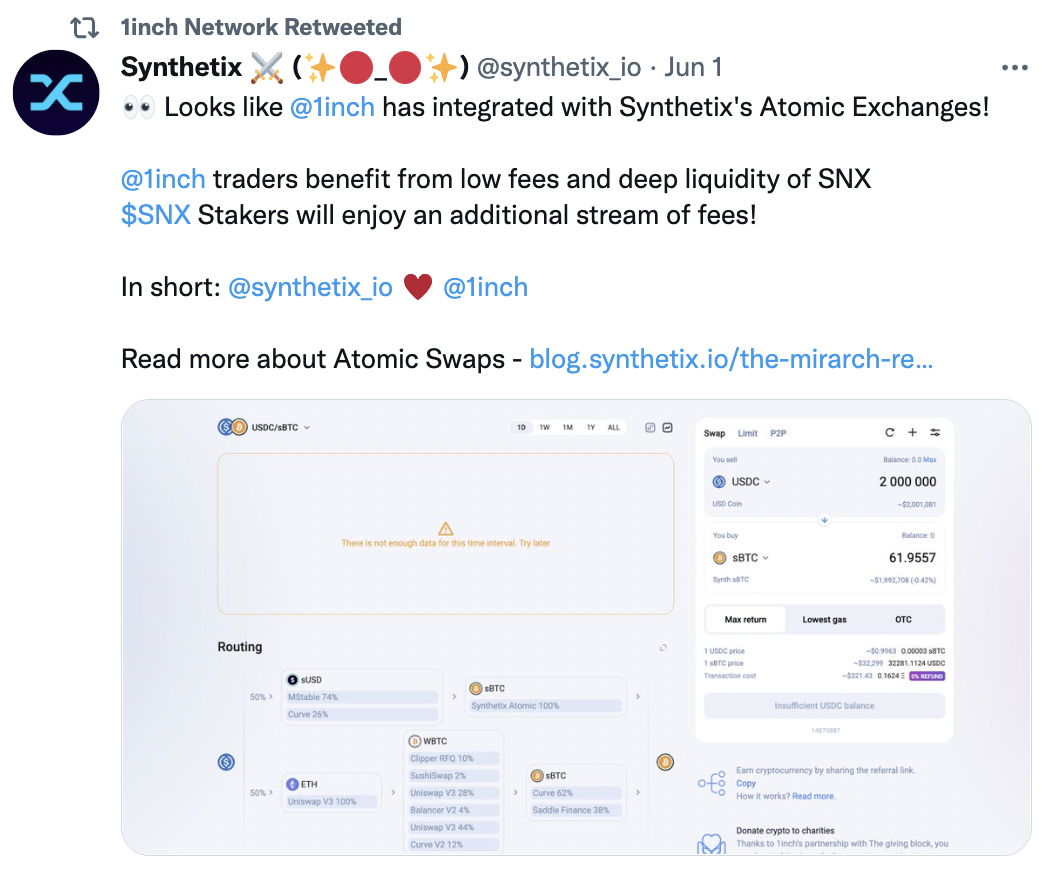
81% of Synthetix's Trading Volume Comes from 1inch
According to data from Synthetix's official website, the total trading volume within the protocol over the past 30 days was approximately $2.258 billion. Of this, $1.83 billion in trading volume came from 1inch, accounting for about 81% of the total trading volume.
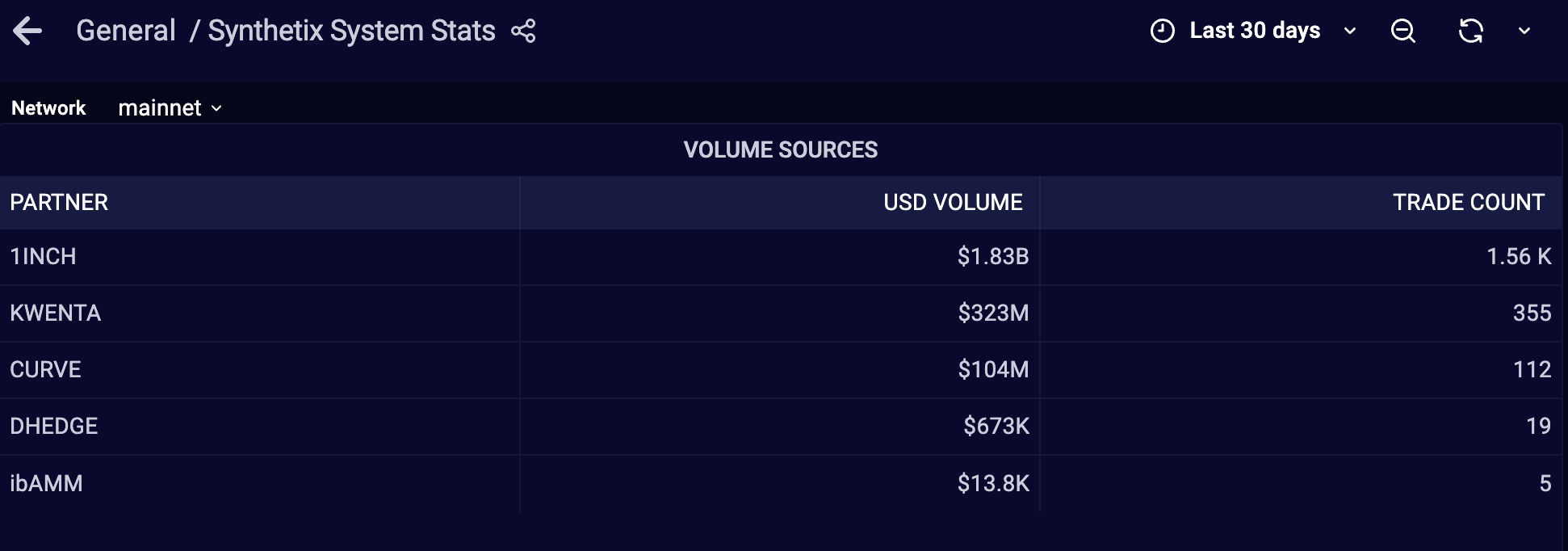
Looking at the changes in trading volume, PANews found that Synthetix's trading volume began to rise and exceeded previous levels starting in early June. The timing of the increase in trading volume coincides with the integration of 1inch's atomic swaps for Synthetix. Starting from June 13, the daily trading volume was around $70 million, peaking at $255 million on June 19. In the last five days (June 25 to June 29), the average daily trading volume was about $84 million, with no significant decline.
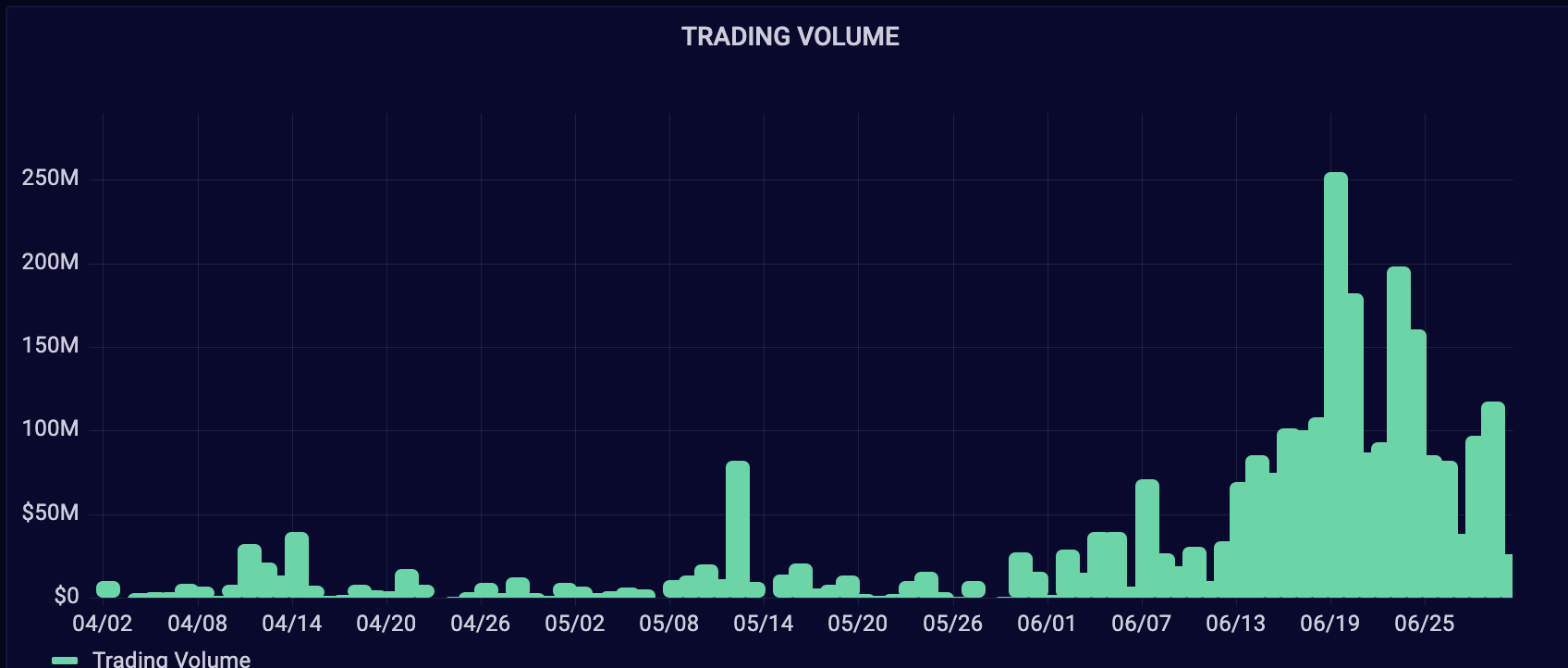
Comparing the trading volume changes of other exchanges, taking the ETH/USDT trading pair on Binance as an example, although the number of ETH traded recently has increased compared to before June, in terms of dollar value, it has already fallen back to the trading volume levels before June.
Therefore, it can be concluded that the recent increase in Synthetix's trading volume is primarily due to 1inch's integration of Synthetix's atomic swap functionality, rather than an overall increase in market trading volume.
Limitations of Atomic Swaps
Currently, the atomic swaps integrated by 1inch for Synthetix are limited to direct buy or sell transactions of Synths. As shown in the figure below, if 1,000 WBTC is exchanged for sUSD, 40% of the WBTC will first be exchanged for sBTC via Curve and Saddle, and then exchanged for sUSD through atomic swaps, displayed as "Synthetix Atomic."
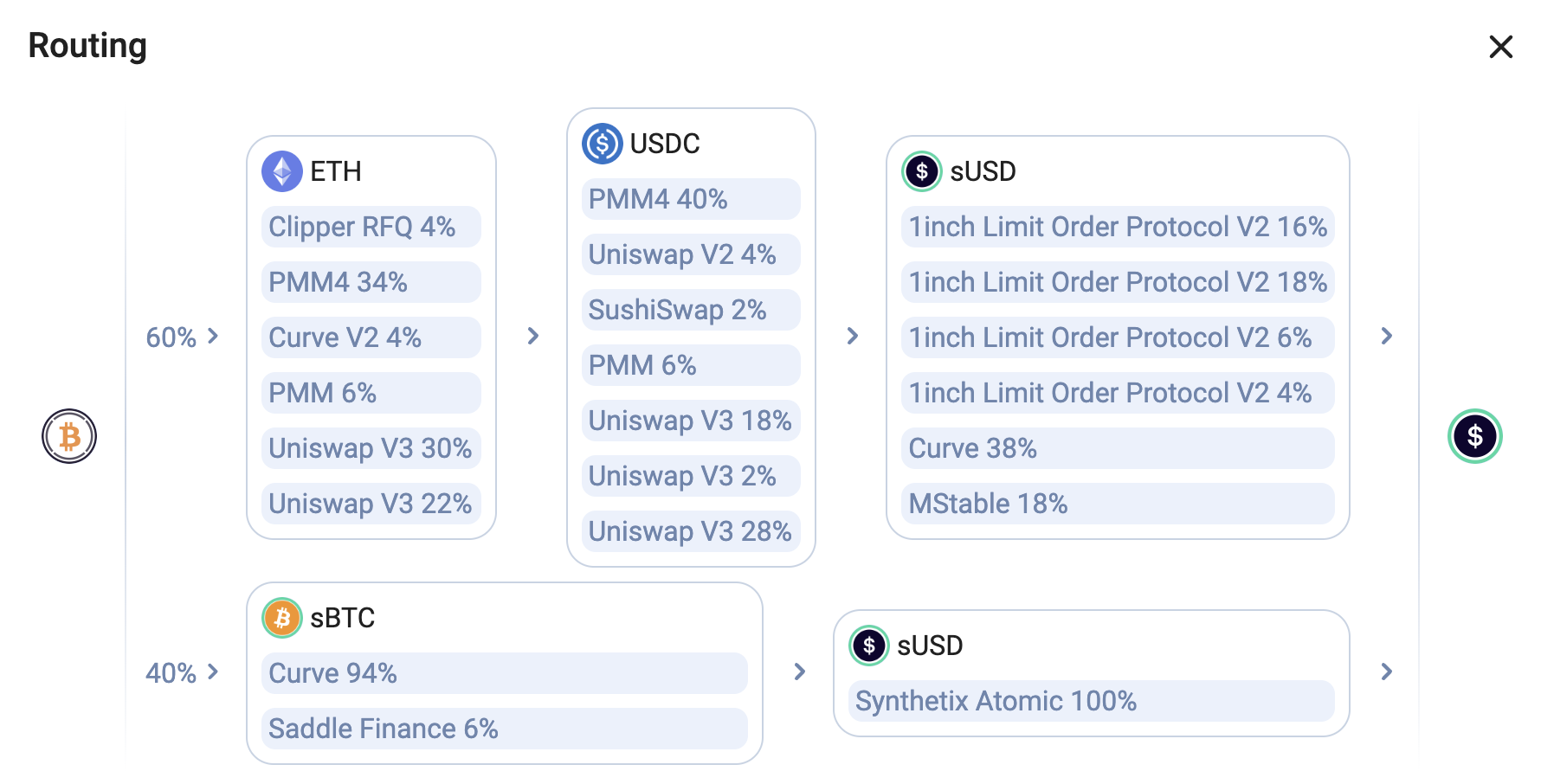
If the transaction does not directly involve Synths, 1inch will not go through Synthetix's atomic swaps. As shown in the figure below, even if 100,000 ETH is exchanged for WBTC with a slippage of 10%, 1inch's routing will not go through Synthetix. However, trades on Curve do not have this restriction, but the liquidity of 1inch's aggregated trades is far superior to that of Curve.
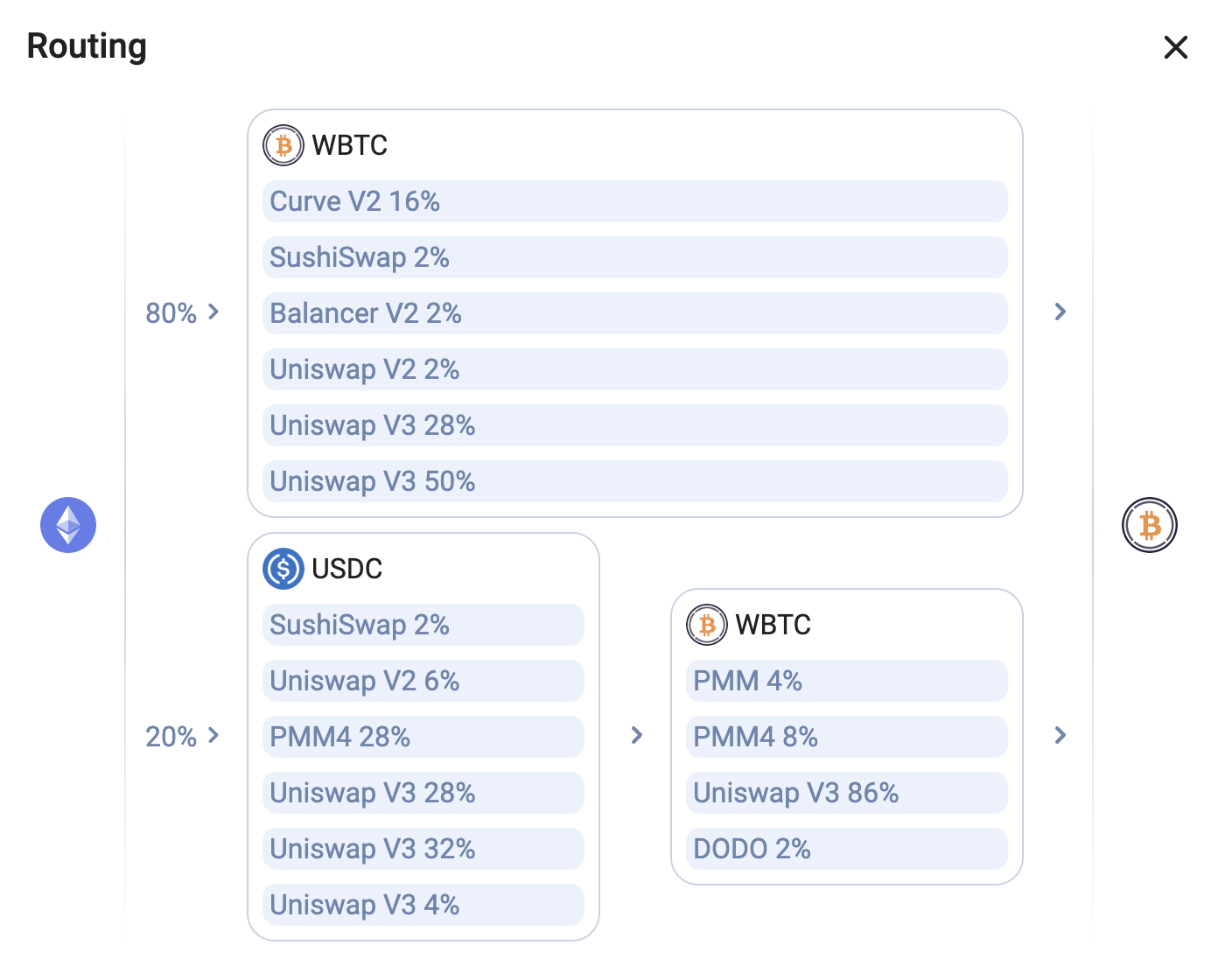
Risks and Opportunities
To earn profits from Synthetix, one needs to purchase and stake the protocol's governance token SNX. Although atomic swaps can be conducted without slippage, trading between Synths and non-Synths still relies on the liquidity provided by platforms like Curve for similar asset trading, which depends on the circulation of Synths and, further, on the market capitalization of SNX. The price of SNX will feedback on Synthetix's trading capabilities, making SNX inherently reflexive and more volatile than other assets.
To maximize profits, it is essential to generate sufficient debt in the system, with the collateralization ratio ideally equal to or lower than the C-Ratio (350%). Once debt is generated, the amount of debt will fluctuate with transactions. To hedge against the risk of debt fluctuations, one can purchase the debt mirror index token dSNX from dHEDGE on Optimism.
As Synthetix's atomic swaps are integrated into more decentralized exchanges and aggregation trading platforms, Synthetix's trading volume is expected to continue to rise. If 1inch can support the introduction of Synthetix's atomic swaps in non-Synth trades, then Synthetix's trading volume may continue to grow exponentially.










